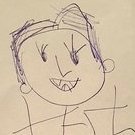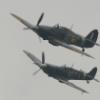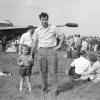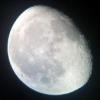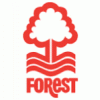Search the Community
Showing results for tags 'Libya'.
-
Hello folks, Finally finished this one. It was my most challenging build so far, and I must say I am happy I can call it done. The model should represent an early version of the AEC Matador, used as an artillery tractor, towing a 6-inch Howitzer. It's based on a reference photo taken in February 1941, near Giovanni Berta, Lybia. It probably belonged to the 234th Battery, 68th Medium Regiment, HQ Middle East Command. However, at the time the photo was taken, the battery was temporarily attached to the 64th or 7th Medium Regiment under the XIII Corps, while the rest of the 68th was deployed in Sudan. It was taken during the opening stages of Operation Sonnenblume in some godforsaken place in Libya. Having no experience with artillery units it took me quite some time to figure out the unit, marking, etc. More info here. AEC Matador kit is AFV Club No. AF35236. I can say the same about all the AFV kits I built so far. They are all very quirky, but they can be built into nice-looking models, and there's always some amount of frustration involved. Instruction errors, and fit issues (which vary from perfect fit to no fit at all on the same model), are usually over-engineered... However, the details are generally fantastic. This kit had all of that and more. On top of everything, the plastic was a bit brittle, which combined with fiddly parts meant a lot of time spent on fixing broken parts. Despite all the issues, it is still a great kit, and I can recommend it. The 6-inch howitzer is a resin kit from Resicast. Never built a resin kit before, so it was a challenge of its own. But the kit is relatively simple so I think it's a good choice for a first resin kit. Here's the model: Only the wheels were replaced with the AM Panzer Art resin version. The wheels included in this kit are vinyl ones, which I hate. I was considering scratch-building all canvas sheets, but in the end, I only replaced rolled sheets and kept the plastic version for the rest. The reason for this is that I had to mask the Caunter camo, and I am quite sure that paper canvas sheets wouldn't survive this. The plastic sheets included in this kit are almost completely flat, which is a pity because everything else is super detailed. So it will be something left to be desired. The rolled canvas and canvas cover used on the howitzer are made of paper using a VMS paper shaper. The camouflage net was made from medical gauze, impregnated with paper shaper as well. This was my first try to do a vegetation. The result could be better, but it is what it is. It's made from Green Stuff World Seafoam trees and leaf litter. Decals are coming from 3 different sets. I was struggling a lot to make the model fit isometric photos. The model is painted mainly with MRP paints, although I used Real Colors for canvas (cause it's easier to do chipping), and Vallejo, Gunze, and Hataka for brush and detail painting. Masking it for Caunter camo was a project itself. Including an incident in the middle of painting when I dropped the model and spent a few days fixing it I did just some basic weathering with washes and pigments. And here are some detail shots. And the reference photo I used. Overall, this was an adventure. Cheers, Nenad
-
Hello everyone, I was looking forward to this build, because I find A9 quite an interesting tank and I read good stuff about Gecko's kit. And I needed something pleasant to build after my experience with Vulkan's Vickers Light Tank. It turns out that what I heard about Gecko's kit was true. It is one of the best kits I have ever built. Especially regarding the details, which are absolutely fantastic. A9 was quite an interesting vehicle. It was not very reliable and was prone to braking down quite often. It's recognizable by two auxiliary turrets housing Vickers MGs. However, they were rarely used, because turrets were extremely hot in desert conditions. They were used to stow additional ammunition instead. It was also plagued by the underpowered AEC bus engine. Overall, it was the beginning of the long and troublesome way to find the successful cruiser tank design that ultimately lead to great designs by the end of the war. This model should represent 1RTR, 'A' squadron tank. The photo I used as a reference was tankan in April 1941 in Derna Pass. It's interesting to me that this photo was probably taken at the same time and at the same place as the photo of Panzer III Ausf. G that I was building a few moths ago. However, A9 was probably abandoned earlier this year, during the Operation Compass, because the 1RTR was not present in this area after February 1941. Abandoned tank was probably moved to the side of the road to clear the passage for the advancing columns. Model was built out of the box, with only some very minor changes, like registration plate (which was mounted differently on this particular tank) and some wiring added. Kit provides quite nice interior, and with so many hatches, I decided to keep them open. Tracks are indy links and are fabulous! Model was painted with MRP lacquers for camouflage painting and combination of Gunze and Vallejo for detail painting. This tank was painted in standard Caunter Scheme (Portland Stone, Silver Gray, Slate), although there are some deviations compared to the official scheme, especially on the frontal side of the tank. This was quite common at the time and Caunter Scheme was simplified by the army painters. And here are some details. I tried to capture some of the interior. I heard some cracking noise while attaching the turret to the hull, but I was not able to determine did I break something. Until I saw photos of course That's when I noticed that turret plates separated a bit. But I'll leave that to be fixed some other time. And at the end, the real thing. Thanks for watching and looking forward to your feedback. Cheers, Nenad
-
This model was completed on Sunday, Jan.1 2017. It was started in mid-July 2013! It is one of my last two completed builds. At some point, it was relegated to a safe spot and more or less abandoned. I would dust her off from time to time, always thinking I’d get back to work on the kit but again, time would soon find her back on the shelf. Not long before the holiday season just past, I started yet again and with a new resolve to finish her and move on to other builds. The model represents aircraft number 501(build number 161685) of Navy squadron VM-85. It took part in the Navy’s attacks on Libyan patrol boats in the Gulf of Sidra, March 1986. The aircraft carries two AGM-84 Harpoon anti-ship missiles and three drop-tanks. I am not sure that that is the exact load-out for 501 on any actions there but it’s close enough for me. The paint is Model Master enamel; dark ghost gray on top, light ghost gray underneath. The decals are from “The Intruder’s Sandbox” set by AOA decals. I had a couple fairly good reference photos of this aircraft and that helped as I tried to replicate the worn, patchy appearance of those Intruders. The ochre colored anti-erosion tape seen on the leading edges is clear decal film sprayed with Humbrol trainer yellow. That idea saved me a lot of masking and time. The rod for the flak curtains is fine wire, secured to a tiny length of aluminum tubing in front and into a hole in the canopy bulkhead. (and as I looked at the pics, the thought occurred to me...wouldn't the right side have a flak curtain as well? Oh well. Good luck to the right-seater!!). I ground and carved away at the kit exhaust as they looked pretty bad. The exhausts now seen are sections cut from old ballpoint pens. I used my Paasche Model H for the spraying and used various shades of gray, rectangular and square cut-out “stencils”, file card as a straight edge, Flory washes and some pastel chalks to weather her. A mechanical pencil with the point sanded down quite finely and pieces of old vacuum cleaner belt was used to draw the panel lines. The drop tanks were done the same way and then I used a cotton bud to blur the pencil lines a bit. I think that technique gives a good result with raised lines. The kit went to together fairly well and the worst ordeal was attaching the tanks and ordnance. The attachment points were poorly engineered and seemed way too fiddly to me. Oh, and she's a big-time "tail-sitter" too. Even with two 115 gr 9mm bullets epoxied into the nose cone, she'll rock back on her heels like a cheap whore at the slightest provocation. Like moving the canopy too far back. The slight wind at the airport made it really frustrating to get pics because the model was constantly tilting back. I was not greatly impressed by the AOA decals either. Some resisted adhesion and none seemed overly rugged but rather too fragile. But after much gnashing of teeth and entirely too much time, she is finished and already in the display cabinet. But before that could happen, I had to get some pics. Here are some taken inside on Jan. 1 after everything was finished, and a few from next day at the Cameron airport too. January 2 was a lovely day out there and I had a nice interaction with two local police officers. They were very cool! As usual, thanks for taking time to look and comments welcomed!
- 35 replies
-
- 59
-

-
Hi Mates, Finished a F-5A from Classic Airframes recently. Thought it would be nice to make it from a lesser know F-5 user, Libya. The operational life of the F-5 in the Royal Libyan air force was a short one due to the coup from Gaddafi in 1970. Couple of the machines were sold to Turkey I believe. The kit is OOB except for most of the decals, the Libyan markings are from ArmyCast and the stencils came from the CA kit and from a spare Kinetic kit F-5 decals. Oh, and the pitot is from Master. The build process can be seen here; https://www.scalemates.com/profiles/mate.php?id=14213&p=albums&album=72174 Erik
- 25 replies
-
- 60
-

-

-
- F-5
- freedomfighter
-
(and 1 more)
Tagged with:
-
Good afternoon, yesterday, I have started to build the Tamiya-F-16. Wow, that's an amazing kit! Must have one of the best surface details I ever saw on a 1/72-kit! It will be a wild weasel Viper as used in Libya 2011 in operation Odyssey dawn. The real thing should look something like this: http://www.f-16.net/g3/f-16-photos/album38/album70/91-0343_001 As no weapons or tanks are included in this kit (I bought the first boxing...), I also got a cheap Hasegawa F-16, from which I will use the ordnance. Decals are from Astra Decals, and the seat is from Quickboost. Alex
- 67 replies
-
- 2
-

-
- F-16
- Odyssey dawn
-
(and 1 more)
Tagged with:
-
Good morning, I'm about to get the infos for one of my next projects - a Rafale B or C, used in the operation "Harmattan" for hitting the bad guys. After some research on the net, I got to following points: Scalp: used by navy (one each aircraft) or air force (two each aircraft, later reduced to one). Along with two large tanks, 4 MICA, no other pods. Air Force used scalps only on two-seater. As only 15 scalps were used - has anyone the list of the aircraft which fired those? AASM: usually 4 per aircraft, two to three tanks, 4 MICA, and again, mostly no pod, since they are INS/GPS-Guided GBU-12: 4 per aircraft, two to three tanks, 4 MICA, and a damocles pod for laser designator, but only on the single-seat (but not on the two-seater- buddy lasing?) So, can anyone help with following points: only 4 laser guided bombs per aircraft were used. Any rule about two or three tanks? usually no damocles on the twin seater (but with some exceptions?) if I have to build a damocles pod - can I use a US lantirn pod (as in the hasegawa weapon set) as a base, and what to change? Any help in this matter is well appreciated. Oh, et dès que je comprend bien le français, un lien francophon peut aussi bien aider! Alex http://www.escadrilles.org/reportages/harmattan-zara/
-
A couple (or so) from Mitiga in 2007 .....
-
Good afternoon, the Rafale has been finished a few days ago, and today I took the pictures. It's one of the Rafales which did the first live shooting of a Scalp cruise missile in Libya, March 23 2011. The kit is from Hobby Boss, it's ok as a base, but some things need to be changed, as they are not 100% accurate. It's still not, as I left some minor things out like the shell shute for the gun. The cockpit has been upgraded with the Eduard set, and the decals are from the excellent Syhart sheet. Colour was mostly revell light grey, which I think looks nice. Nose gear with some brake wiring. In the intakes, I added some sheet to avoid eye contact with the gear bay. Nice detailing of the Eduard cockpit. Displays, mirrors, grips And lots of seat belts! The HUD may be a bit too steep. Burner can with nice rivet decals, and the added chaff launcher Live ordnance. 4 MICA, 2 Scalps and 2 Tanks. Not bad at all. I think the MICA will fire straight into the tank... are they dropped before launch? they are slightly bent outside, but on the kit it's a bit excessive. All in all, a nice kit which was fun to build. To have a realistic model, I highly suggest the Syhart decals, they are very good to work with, and you get plenty of other decals you could use on other models (like decals for 6 GBU-12, for instance) Alex
- 8 replies
-
- 21
-

-
- Hobby Boss
- Rafale
-
(and 2 more)
Tagged with:
-
Ah, la France! Le Camembert, le Bordeaux, le Moulin Rouge, la Guillotine, la bombe atomique... et le seriously armed Rafale, ready to kick some bad guys buttocks! So, I decided to build a Rafale, as employed over Libya 2011. I wanted to build one of the Rafales which delivered the Scalps (the French Storm Shadow). For that, I will use the well-known Hobby Boss kit, which is not bad, but has some points to be corrected. I will also use a small PE-set from Eduard for the cockpit, and the excellent decal sheet from Syhart. For Reference, I will stick to another typical french item, the comic books (le BD, bande dessiné). There are some "Rafale Leader" books from Durand/Zumbiel, which have some excellent reference after the story itself. 160 pages, mostly great colour pictures of the Rafale and the airbase. In my case, it's St. Dizier, where the scalp dropping Rafales actually departed. So, a high level of frustration is guaranteed when I can cross-check the hobby boss kit with the lot of reference material! The Rafale will be Nr. 315, 113-HK from EC1/91 "Gascogne", equipped with 4 MICA, two Scalps and two of the big 2000ltr-tanks. This load out was common in the beginning, later they switched to one scalp only configuration. Marine employed the Rafale all the time with one Scalp only. Nice report can be found here, but unfortunately french only: http://aviateurs.e-monsite.com/pages/1946-et-annees-suivantes/les-belougas-d-harmattan.html Let's start with the kit itself, mostly with le cockpit: I have already scraped the side walls, as some PE-parts will be glued thereafter. Seat looks nice, belts will be added later on. The outlet of the aircon, I suppose. Here, it pays to make the sheets a bit thinner by sanding or scraping with a scalpel blade. The big badda-boums, the two scalps. They are really big, and consist of 10 parts each. And the tanks. This is where the problem starts, all modelers like recessed panel lines. But here on the tank, these are welding seams, and are not recessed, but raised. I will put some stretched sprue in the recesses, to simulate this effect. Thanks for attention! Alex
- 22 replies
-
- 4
-

-
- Rafale
- Hobby Boss
-
(and 2 more)
Tagged with:
-
Hello Everyone, Well this is my second build for the Remembrance Day Lunch that the librarian, Karen, at work will be holding. This Tomahawk will be displayed next to a Spitfire, Bf-110 and Bf-109, possibly a Lancaster too. I decided to add this one as who doesn't love a Sharkmouth?! Plus I was trying to convey the notion that the world war was just that, worldwide... you know what kids are like. Anyhow, this the newer tool mould from Airfix of the classic Tomahawk (always liked this aircraft). I had a few issues with it, I think most of those issues where my own doing. Live and learn huh? I had to strip the paint as the xtracrylix didn't wanna play for some reason. I had to resort to Tamiya and mixing the middlestone colour. I am quite impressed with it. On to the pictures. Still learning how far I can stretch the EZ-Line, unlike the Spitfire, I dont think the weather is heavy enough. I had fun making this model and it went together really well, apart from a few silly bits. Once again, please let me know what you think. Kind Regards, Dazz
- 20 replies
-
- 27
-

-
Hi all, here's what I intend to build. No aftermarket (unless I can find a seat). Wish me luck! FF
-
An Airfix starter kit. Curtiss Tomahawk flown by Neville Duke in WW2 of the No.112 Squadron based in Libya, 1941. He ended the war with 27 victories flying Tomahawks, Kittyhawks and the Spitfire before going on to becoming a test pilot. It was a fun kit, I enjoyed making it. The colour scheme was what sold me on buying this. I hadn't built a plane with a face before so the shark jaws motif sold me on it
-
Super Etendard ‘Libya 2011’ 1:72 Academy The Super Etendard is a single-seat single-engined naval strike aircraft developed by renowned French aircraft manufacturer Dassault-Breguet. The Super Etendard is a direct development of the Etendard IV, an aircraft designed and flown for the first time in the 1950s. It was originally envisaged that the role undertaken by the Super Etendard would be fulfilled by the SEPECAT Jaguar M. Following political and technical issues with the Jaguar, however, the French government elected to purchase the home grown product over the navalised version of the Anglo-French Jaguar. Between 1978 and 1983, 85 Super Etendards were produced by Dassault. 14 were acquired by Argentina and 5 by Iraq (on loan). The rest equipped the Aviation Navale. Super Etendards saw combat for the first time in the Falklands War, when the Argentinians used Exocet equipped aircraft against the ships of the British task force. Iraqi Etendards were also used on combat operations during the early eighties, this time against Iranian merchant ships in the Persian Gulf. French Super Etendards have seen service in the skies over Lebanon, the Balkans, Afghanistan and Libya. Many are still in service, although all are due to be replaced by the multirole Dassault Rafale M. Academy’s Super Etendard has been around in one form or another for a good few years now. The plastic parts are identical to the Italeri kit which first appeared in the mid-to-late 1980s. The idea that Academy’s kit is a copy of the Italeri kit has been put forward from time to time, but it seems that the tooling actually originates from another company from the Far East called Sunny, although exact details seem to be uncertain. In any case, the kit is generally well regarded. Now Academy have released a new edition with decals for French aircraft deployed in last year’s operations over Libya. Inside the top opening box are 58 parts. 54 are moulded in glossy grey plastic, whilst the remaining four are accounted for by the clear sprue. The moulds appear to be in excellent condition for their age (they are at least 25 years old). There appear to be hints of flash here and there, but nothing that can’t be cleaned up in a few seconds with a sharp scalpel blade. Surface detail is comprised of extremely fine (almost too fine) recessed panel lines. All-in-all, this kit looks far newer than its 25 years suggest. The cockpit is comprised of a tub with sidewalls, an instrument panel, an ejector seat and a control column. Neither the instrument panel nor the side consoles feature any raised detail. I was expecting that the decal sheet would make up for this lack of detail, as that is the route taken by most manufacturers. Unfortunately, however, it doesn’t. This is a shame, as I don’t think a couple of extra decals would have cost any more for Academy to produce, but I’m sure most of us can find something in the spares box to make up for this omission. The Martin Baker ejector seat is a slightly odd shape too, as the seat pan is very shallow. A resin replacement might therefore be a good idea. The fuselage is split vertically, with a separate part for the lower rear area. It’s easy to see why the manufacturer has opted to do this, as it means the tail hook recess has been realistically depicted. The main landing gear bays and the airbrake bays have also been nicely designed, and feature a reasonable amount of structural detail. The engine intakes are blanked off to prevent the dreaded see-through effect that an otherwise hollow fuselage would produce. The jet tailpipe is also nicely detailed, with a crisp, thin edge. The wings are moulded in upper and lower halves, and the trailing edges seem reasonably sharp. The horizontal stabilisers are solid parts. None of the control surfaces are moveable. The landing gear is nicely detailed, although the main gear tyres have ejector pins on their inner surfaces which will need to be carefully cleaned up. The landing gear doors feature some detail on the inner surfaces, which is a bonus. The canopy is moulded in two parts, so it can be posed in the open position if desired. You’ll probably want to add some more detail to the otherwise spartan cockpit if you choose this option though. Ordnance is comprised of one 1100 litre drop tank, two 600 litre drop tanks, a pair of R 550 Matra Magic air-to-air missiles and a single AIM-39 Exocet anti-ship missile. Two options are provided on the decal sheet: Super Etendard Modernise No. 55, French Navy Flottille 11F, 2008; and Super Etendard Modernise No. 10, Operation Harmattan, French Navy Flottille 17F, Charles de Gaulle, 2011. The decals are printed by Cartograf and look excellent. The level of fine detail that Cartograf have been able to reproduce is outstanding, and the colours are lovely and bold. The decals look nice and glossy too, which should help to minimise silvering. Conclusion Academy’s Super Etendard is generally well regarded by the modelling community. It has one or two shape issues (the distinctive ‘droop’ in the nose is too subtle), but nothing catastrophic, and it has to be said that it looks great for a 25 year old kit. The updated decals are welcome too, particularly as they are so well printed. Recommended. Review sample courtesy of
- 4 replies
-
- Etendard
- Academy Etendard
-
(and 3 more)
Tagged with:

